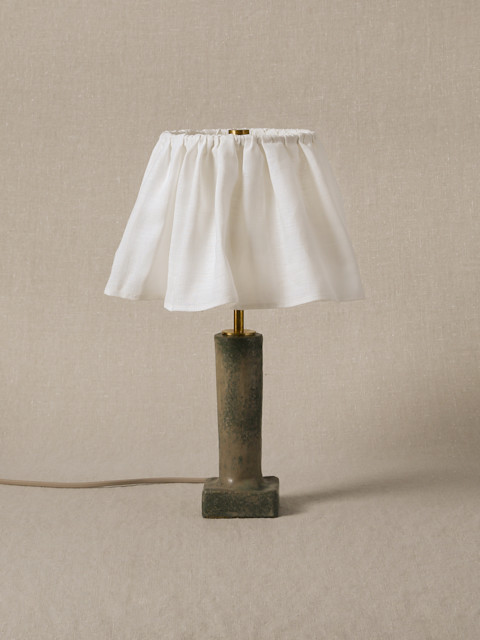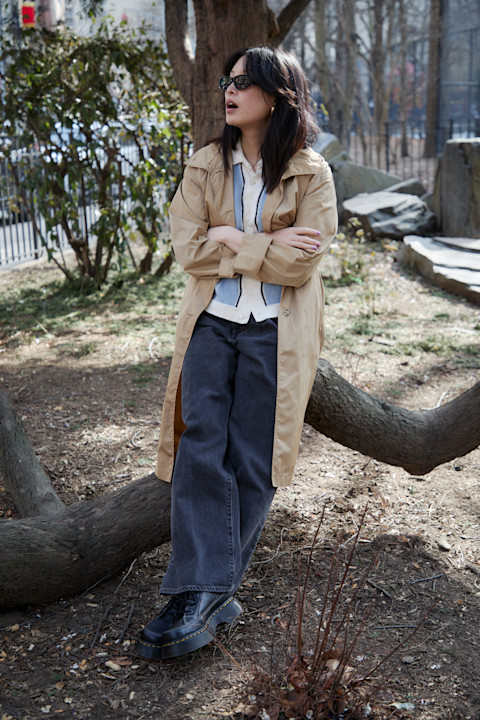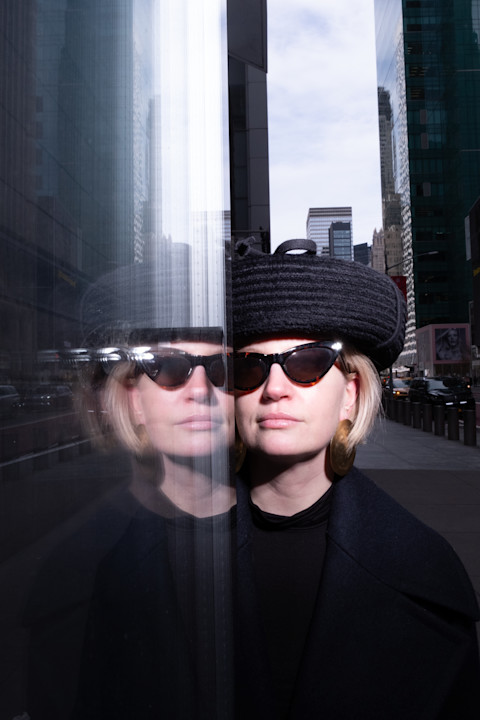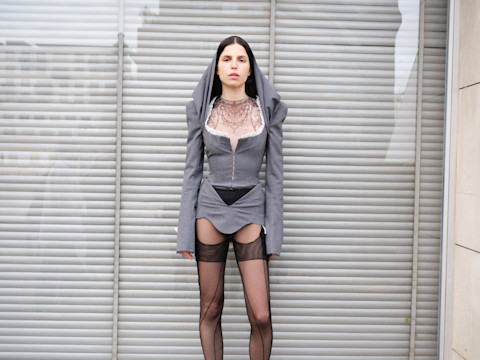I Love Lamp
Lighting suggestions for your home.

The long, slow reign of blobby lamps and way too neutral lighting is over. The sun is setting on harsh, noncovered overheads, and, while we’re at it, anything at all that flickers. No more LEDs, no more off-colored squiggles, no more cold, construction-white tones like in most offices.
Well, in an ideal world, anyway. If the new age of lighting isn’t equally distributed yet, it’s bubbling up and can be seen in fits and spurts by individuals who pay attention to these things and who work in it.“We’re coming out of the world of neutrals and into art deco inspiration and moody palettes,” says Jamie Perez Herrera, an interior designer based in Brooklyn who works on residences and private homes. That neutral look—gray, gray, and more gray; some tan—can feel a bit like a Venice, California, Airbnb, and has become ubiquitous over the past half-decade.To be sure, that aesthetic isn’t in danger of disappearing: It’s not like all those tan and gray hotel lobbies are getting demolished. Instead, Herrera says, she’s seeing newer commissions defined both by “softer, off lights,” with warm refraction, and, from the other side, more color as a move away from full monochrome. This is where indoor lighting is headed.

Those warm lights focus the eyes on a “glowing softness,” Herrera says, “not the hardware,” and can take cues from Isamu Noguchi, the artist and furniture designer known for, in part, his rice paper lamps. Noguchi’s contributions to lighting were so massive that the variations, such as shallower pendants made by the artist Celine Wright, which use similar or identical materials as Noguchi, sit in the shadow of—and match with—the original vintage.
The use of color is skewing away from primary shades and bright options towards tinted glass in mature and evening-ish shades. Lamps that “play with color and not just form,” Herrera says, are being requested, and she’s seeing a movement away from “the ball shape and into something that’s more organic.” Think of it as an evolution: The ball lamp gives way to darker colors and different expressions. Herrera points to a suite of lamps from In Common With, a New York-based lighting studio, that meditate on different, darker shades of glass. The minimal Up Down sconce in a dark mulberry speaks to, but is quite apart from, the brand’s adorned, hanging Calla pendant in bright red.


Another lane of wilder lighting expressions is also emerging. Hayley Jean Clark, a design writer, says she’s seeing fewer loud desk lamps—“colorful and blobby or squiggly lamps” and ’70s Italian postmodern knockoffs—and instead seeing a move by designers and individuals to “favor more earthy tones, warm neutrals, and natural materials.” Clark singles out the curtain lamp—exactly what it sounds like—with both vintage varieties and newer productions becoming ascendant.Among contemporary models, Analuisa Corrigan’s appropriately named Curtain Lamp predominates, and on the vintage side, classics by Tobia Scarpa, Josef Frank, and Josef Hoffmann are making their way onto mood boards and into homes. Clark points to Scarpa’s Celestia light in a project by LA studio 22RE and the Curtain’s omnipresence as examples. (It’s been popping up everywhere from Swiss hotels to London kitchens.) They’re both differently expressive from the smoother postmodern colorful ones that have defined the past five years. A Josef Hoffmann for Wiener Werkstätte lamp—a curtain with a tough metal base—Clark says, “strikes a balance between Victorian surfeit and Corbusian bareness.” Very advanced; a sort of high-low dichotomy contained within the same piece.
DIY varieties of these curtain lamps also show up—a doily shade in the Gohar World store is snappy enough to stick out. It’s not surprising: Lighting, says Emily Crist, a set designer and interior decorator, lends itself to the DIY aesthetic. Lamps are “really accessible to make,” she says. “It’s not hard to wire a bulb, and so lighting trends arise from the fact that it can be so DIY.” There’s a unity here: Crist says she’s noticing, like Clark, “lots of fabric” in lighting—“nobody wants to see the lightbulb,” as Herrera puts it—and “draped, or homemade” lamps.These homemade lamps, Crist says, are sold in short runs and look "homemade but elevated—something you’re not used to seeing out in the world.” Crist points to Tulip Shades’ Eva Joan collaboration—“DIY in appearance,” she says, and not a lamp—as an example of a handcrafted aesthetic that does not look commercially produced. (This despite Tulip Shades’ omnipresence on Instagram.) On the actual DIY side, there are productions from Will it Lamp?, a project in which a couple repurposes and upgrades thrift store finds—some of them colorful, some of them squiggly, some of them exposed.

Interior designers don’t always limit overhead light when outfitting a home, but they tend to keep it covered, and the more permanent solutions—cool vintage overheads, like a Joe Colombo ceiling lamp—tend to only work for homeowners, who’ll have an easier go of it adjusting the wiring. Herrera nonetheless recommends the soft, covered lamps for overhead—not Noguchi, which can have a 30-inch clearance, but certainly not avoiding it; Crist recommends a panoply of lamps, or ambient floor lighting.The multilamp argument is a good one: One doesn’t need to throw out their squiggly lamp; they can just demote it, and upgrade it with one of the above options, or this Castiglioni for Flos, which has a bit of a rice paper thing going on, or this Knuckle, by Hem, whose exposed bulb proves an exception to the above discussion. When there’s variety, you can break some rules.The nice thing is that irrespective of trends, switching up one’s lighting at home is the easiest way to make your place look very different, whether you rent or own. “If you have a shitty apartment with gray flooring, you can’t rip that up,” Crist says, and “painting is a big commitment. But changing the color of your surroundings by what light source you have is a low stakes and easy fix.” Up to you how many light sources you want to upgrade.




